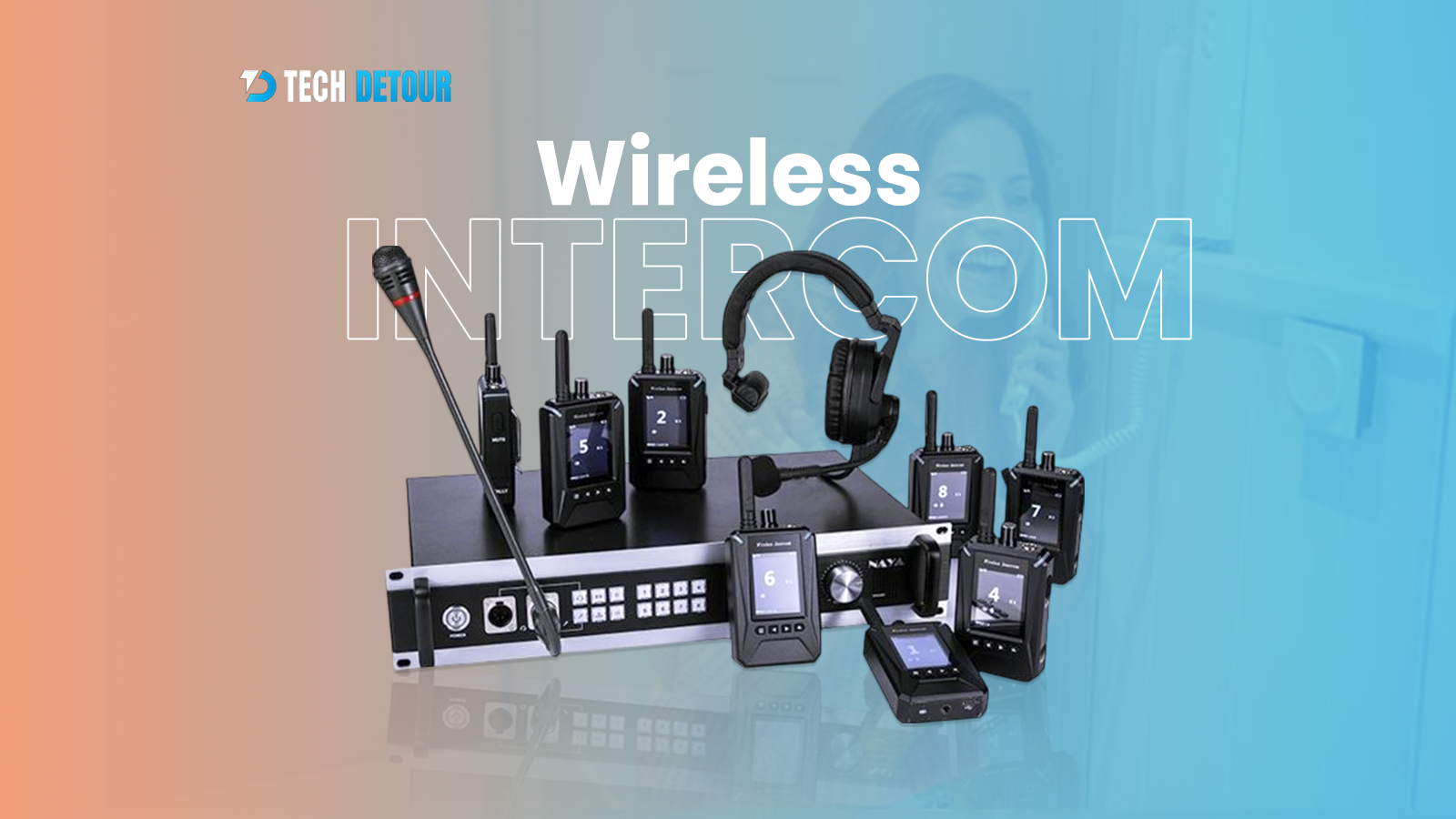Opening the main door of your apartment or home without verification is not safe, especially when the doorbell rings unexpectedly. At the same time, it causes frustration when the door opening demands you to pause your involved activities. Using wireless intercom systems makes life easier in various ways.
Do not consider installation of wireless intercom as an obsolete infrastructure. It helps you to stay connected with essential contacts while you are offline. Many industries still actively use this technology such as hospitality, healthcare, security, and surveillance, and transportation for effective communication. The wireless communication system is becoming more relevant in the current era, with the inclusion of next-generation features. According to a report, the global market for intercom systems will reach $5.49 billion by 2029.
What is a wireless intercom system?
A wireless intercom system helps users in effective communication without using physical wires. The device transmits data using radio frequencies such as UHF, VHF, Wi-Fi, or DECT 6.0. Users can use this device for instant communication within a specific range.
How does a wireless intercom work?
There are two major components of wireless intercom systems, one is the base station, and the other is the user station:
The base station
The base station acts as the main controller of the entire intercom system. Without using wires, it can listen and talk with other devices with the help of built-in radios in it. Users can also connect to other systems such as speakers or wired intercom lines. Ensuring smooth communication among all connected devices is the main purpose of the base station.
User station
The user station is a portable device that users can keep with for communication within the boundaries of their intercom system. A belt pack is one of the common examples of user stations. Users can place it on their waists and connect it with headsets.
After setting it up properly, it becomes able to send and receive audio signals from the base station. The sound efficiently travels to the other connected devices.
Wireless Callboxes
Users need to hold down a button to communicate with the next person while using wireless callboxes. Pressing the button sends signals to the base station, so it starts to ring. The addition of the following features in the latest models enhances their performance:
- Weather resistance.
- Solar-powered batteries.
- Ability to integrate with security systems.
What are the use cases of remote communication boxes?
The two-way call station devices are perfect for outdoor uses such as parking lots, construction sites, or large campuses. Their usefulness ranges from domestic to organizational use cases, such as:
- Requesting entry into an area.
- Reporting a problem to supervisors.
- Asking for help.
Wireless intercom 2-way
A wireless intercom 2-way supports smoother communication between two people. It eliminates the need to press a button to send a message or wait for the next person to finish speaking. The advanced version of a walkie-talkie supports full-duplex communication. Choosing it is a good option for the following reasons:
- Smoother interactions.
- Handling urgent situations.
Advanced features of wireless intercom system
Modern intercom systems come with Wi-Fi technology, eliminating the need for physical connections. There is a list of advanced features such as:
- Voice command functionality.
- Mobile app integration.
- Connecting with smart devices.
- Cloud-based services.
Video features are also available in modern intercom systems. It allows users to communicate through video calls. Furthermore, advanced intercom systems offer high-level security features. For example, users can assign temporary code to visitors to allow entry to a specific area of their place. In this way, it restricts unauthorized entry.
Can we connect the intercom to a mobile phone?
Yes, users can connect an intercom system with their mobile phones. It allows them to control entry and exit points of their property from mobile phone. Now, the latest door entry systems support integration with a mobile application, allowing users to manage operations remotely.
Working of smart intercom as door entry systems
Smart intercom devices connect to the internet using Wi-Fi or an Ethernet connection. So, it can communicate with mobile apps or other smart devices. This connection allows users to see their visitors, have verbal communication, and control devices remotely.
The device can electronically control the lock system of the gates. With the help of embedded programs, the home security systems verify login credentials such as PIN codes before unlocking.
Wireless intercom for home
Each family member in a home has a different routine and tasks to perform. It creates a communication gap between family members. The increasing use of mobile phones does not appear to resolve this problem. Because recent studies say that the US citizens are trying to reduce their phone usage. In pursuit of achieving their target, they must not miss important messages from their families.
Installing a wireless intercom for home can bridge this gap while offering a wide range of applications. Household users can use intercom for the following purposes:
- Communicating between rooms, ensuring privacy.
- Checking visitors at the main door.
- Monitoring child activities.
- Assisting elderly members at home.
Intercom systems for homes play a significant role in improving connections among family members. It is very useful for people who live in a multi-story home. Technology helps in creating a sober and disciplined environment, where explaining a need is not difficult for an individual member.
Wireless intercom system for office
Effective and secure communication among staff members is a need for all kinds of businesses. The installation of an intercom system for businesses saves staff members from lengthy office processes such as drafting emails. It creates a secure, collaborative working environment while improving work efficiency.
Wired vs. wireless intercom systems
Identifying needs is important for users to choose between wired and wireless intercom systems. To make the right choice they need to consider some essential aspects such as:
- Building infrastructure.
- Security requirements.
- Budget
Let us understand the differences between both systems:
Wired intercom system
Wired intercom installation is a complex procedure. It requires professional services to manage tasks like cable routing and drilling. It is also to make changes to its layout in the future. The wired system is also more costly than the wireless system.
Wireless intercom systems
It is simpler to connect to a battery-powered wireless intercom. Users can connect it with Wi-Fi, radio frequencies, or Bluetooth. It saves users from managing wires. The availability of smart features creates convenience for users and also offers flexibility to change layout in future.
Wrapping up
Intercom systems are still needed in the modern tech era. From enhancing communication with your colleagues to improving connections with family members, the devices help you in various aspects of your life. Leverage advanced features to improve task productivity and enhance security of your place.
Stay connected with Tech Detour to get the latest tech information. We keep informing you about the gadgets that will help you manage your business and routine life.




















